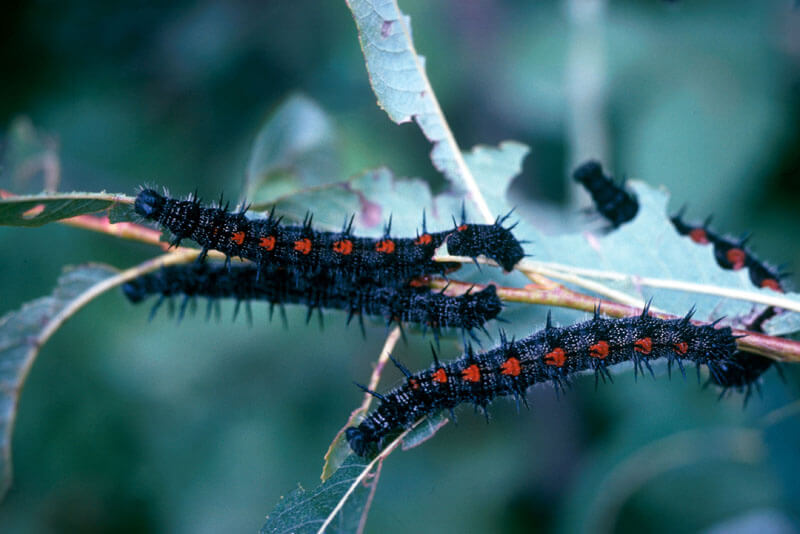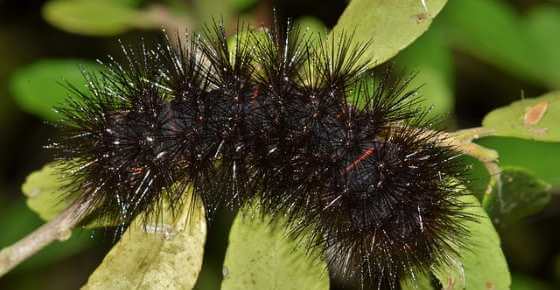Mother Nature designs the world’s insects; though they’re harmless, they’re made to look dangerous. This is for survival’s simple purpose: to scare away predators and us humans.
Even though we don’t recommend you carry a black caterpillar identification chart with you on every visit to the backyard garden, one should be careful while interacting with an insect. The black hairs would indicate it’s either a wolly bear or a leopard moth caterpillar.
In this article, we’ll discuss the black hairy caterpillars, their looks, their hairs, some well-recommended precautions, and some expert points to identify these in the wild.
So pick up your magnifying glasses, and let’s explore!
The Basics of The Black Hairy Caterpillar
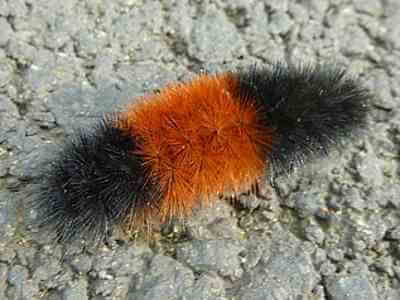
The two most common black hairy Caterpillars are the ‘Woolly Bear Caterpillar’ and the ‘Giant Leopard Moth Caterpillar’; while the former is harmless to humans, the same cannot be said for the latter.
The main difference between the two would be the stripes on the Giant Leopard Moth Caterpillar; these have much thinner stripes than those of the Woolly Bear Caterpillar.
Both these Caterpillars have spikes on the surface of their bodies, which gives the impression of them being fuzzy like a cat.
As for toxicity or imminent dangers, these Caterpillars are safe to touch and keep on the palm, and they very cutely curl into a ball upon human touch, and they don’t even bite.
Caterpillars live in places that are surrounded by an abundance of plants so that they have an uninterrupted supply of food, and it is their natural habitat, too; some examples of the same would include sunflowers, cabbage plants, magnolias, and even willows.
But before you go ahead and touch one, read on to learn about the harmful ones to humans that look very similar.
Harmful or Harmless?
Generally speaking, the black hairy caterpillar is harmless to human beings, with only some of its species having urticating hairs that can cause skin rashes if contact is established.
It’s the Hickory Tussock caterpillar that is harmful to dogs when ingested, as the hairs on this bad boy are toxic for dogs and cause them to vomit, develop diarrhea, and have difficulty swallowing food and even breathing.
These are also harmful to cats and can cause them similar symptoms as dogs when ingested. Also, cats can transmit these rashes to people who touch or hold them, so it is harmful, but not directly.
The caterpillar does play an important role in its natural ecosystem and the food chain it’s a part of. It’s a food source for birds and greatly helps pollination, and how can we forget their sheer beauty when they finally become butterflies and spread their beautiful wings?
Watch Out
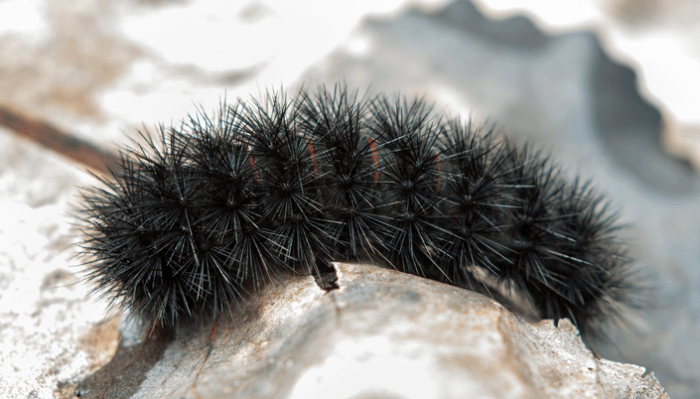
Broadly speaking, if it’s a caterpillar and it’s black, and it has fur or spikes on its body, there is a very high chance that it is completely harmless. Still, there is one of the black hairy caterpillars to watch out for, the Giant Leopard Caterpillar.
This one has spikes all over its body, and even though these spikes may look like hairs, they’re rigid and can prick you if you try to touch or hold them.
Contact with this caterpillar’s spines can result in soreness or swelling of the area pricked by the spikes of this caterpillar; there’s no venom involved, and it’s non-lethal as well, so watch out for this bad boy.
Now, to identify the Giant Leopard Caterpillar, you need to look for the striking red stripes on its body; these stripes are the biggest identifier of this species. Also, their size can be one identification factor; this species of black hairy caterpillar grows no more than 2 inches or about 5 centimeters.
All the other black and hairy caterpillars will, at max, cause little to no skin irritation if close contact is established; absolutely nothing to worry about.
Prevention is Better Than Cure
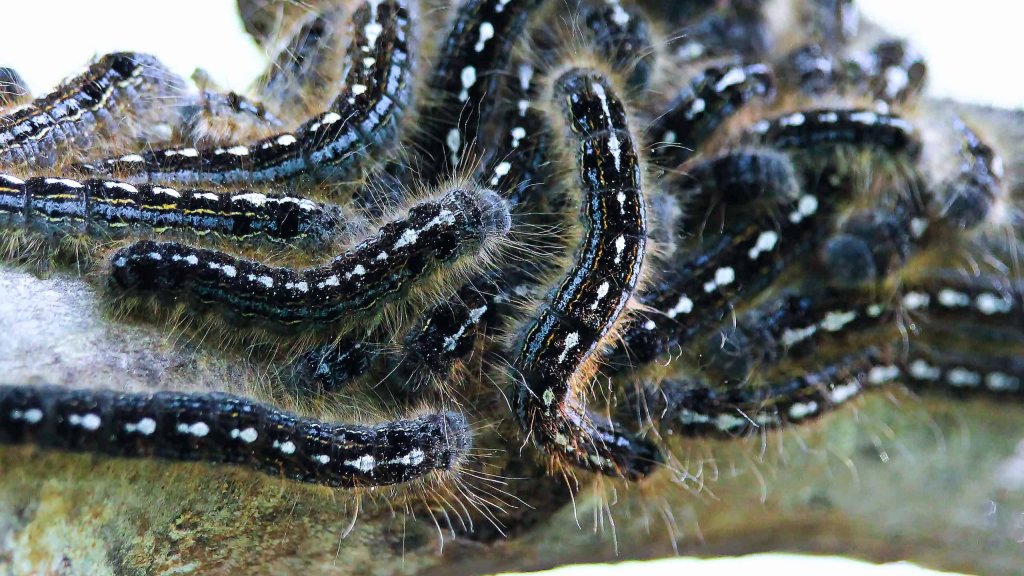
Although these caterpillars are largely harmless to humans, we recommend observing them from a distance without coming in close contact, trying to hold them, or placing them on your palm.
Protective clothing such as full-length pants and a sleeved t-shirt is what we’d advise you to wear in places that are prone to have caterpillars around, such as your backyard, your garden, or a close forest with a lot of green plants, which are majorly what these caterpillars eat and live on.
And if you want to touch or hold one, do research well before doing so; you should be able to tell a harmless caterpillar from a harmless one if you’re going on an exploration trip in your backyard.
A lot of people have pet caterpillars whom they observe from birth to the stage when they finally break open from their cocoons as butterflies; it’s mesmerizing to watch the process. We encourage you to get first-hand experience of the same, but research and knowledge about the caterpillars and their types is well recommended in this regard.
Conclusion
In this article, we discussed the Black Hairy Caterpillar, its types, its natural habitat, and its contribution to its ecosystem and the food chain. We also took a closer look at identifying the harmless and harmful caterpillar, identifying preventive measures, and examining other experiences associated with a caterpillar.
We’d like to reiterate the point that although harmless, black hairy caterpillars can cause skin irritation and sometimes even rashes.
In the end, we would definitely encourage our readers to go out and explore the tiny yet magical world of caterpillars.
It’ll be the best form of appreciation for these marvelous creatures! Go Green!

